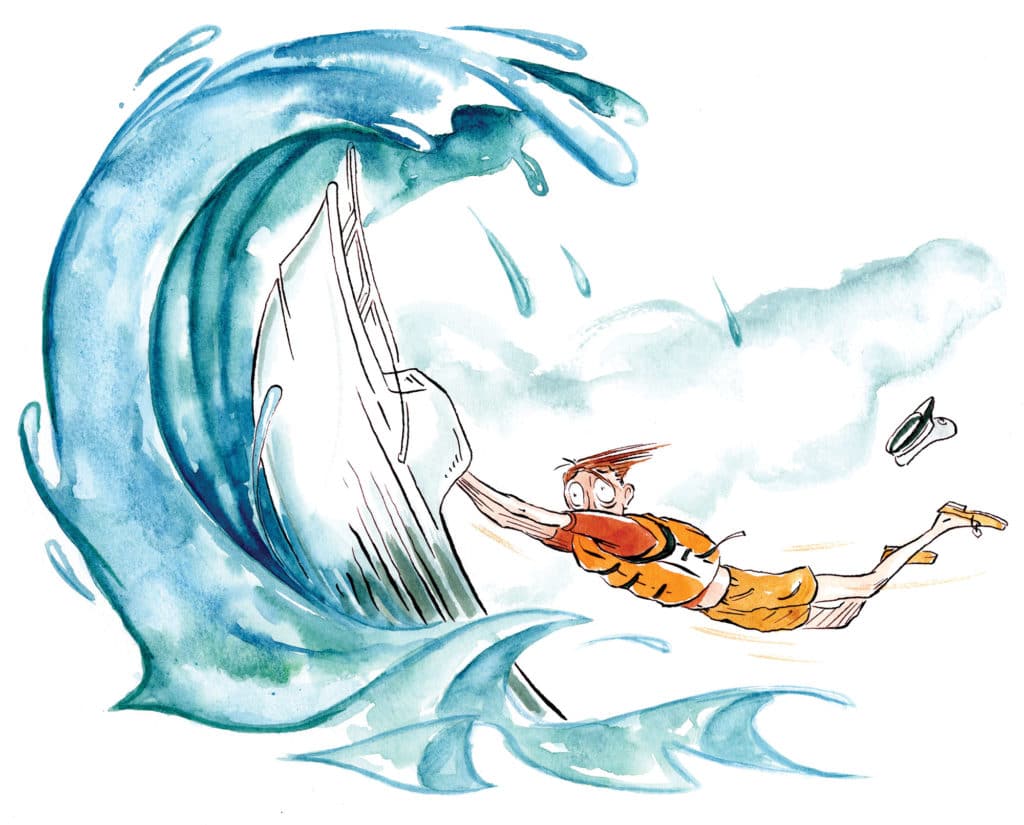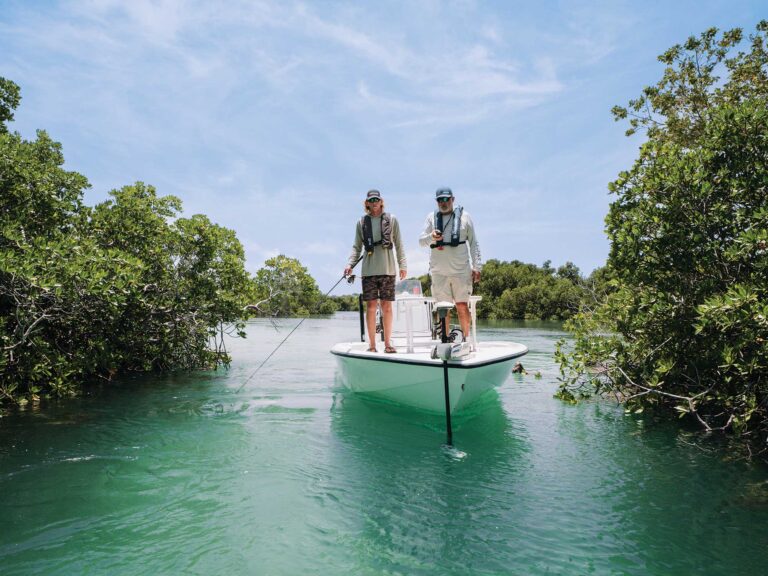
For centuries, mariners have described encounters with massive waves that reared up out of nowhere. And until recently, scientists disputed the existence of such waves.
Today, technology such as satellite radar have proven that rogue waves exist. The National Oceanographic and Atmospheric Administration defines a true rogue as a wave at least twice the size of surrounding waves. According to NOAA, rogues can form when swells traveling in different directions merge to reinforce each other. Rogues can also form when waves encounter a strong opposing current.
I encountered the latter on a windless spring day on the backside of Santa Catalina Island off the coast of Southern California. My three sons and I were on the east end of the island and decided to point our 22-foot center-console west to find fish. A 5- to 6-foot swell humped out of the west, but with a 12-second period, it posed little danger.
That changed dramatically as we rounded China Point about 100 yards from the shore, where the easterly current whipped around the headland. Suddenly, we were looking up the face of a curling 15-footer. I hammered the throttle. The extra oomph propelled the boat up and over. We hovered motionless for a second at the top before plummeting into the deep trough behind the comber.
Read more “Seamnship” columns by the editors of BOATING.
The largest on record was a mountainous 84-footer that struck the Draupner oil platform in the North Sea in 1995, according to the Guinness Book of World Records. That’s a killer by anyone’s standards. Yet everything is relative. That 15-footer off China Point was, by definition, a rogue wave, and it posed a serious threat to our 22-footer. How do you tackle a rogue wave? Here are five tips.
Aim for the Shoulder
Sometimes you can see a big wave approaching and have a few precious seconds to prepare. If you can avoid turning broadside to the roller, maneuver toward the smallest section of the wave. The “shoulders” to one side or the other of the main face of the wave tend to be smaller and less steep.
Avoid Shore Breaks
The mistake I made when rounding the point off Catalina was cutting too close to shore where the current was being squeezed into a shallower column of water—kind of like holding your thumb over the nozzle of a garden hose. The water shoots through with greater velocity and force. As the current undercut the swells, a rogue wave developed. Taking the point wider would have put us on a course where the current ran with less speed, eliminating one condition that contributes to big waves.
Don’t Back Off
If you’re suddenly faced with a rogue wave, don’t try to turn away or back off the throttle. Even turning a slight angle can roll the boat. It’s better to take it head-on. To climb the face of a breaking wave usually requires that you advance the throttle, but be ready to feather the throttle as you crest the wave to minimize airborne travel and an awkward stern-first landing—one that can often swamp the boat.
Flank Attack
When running in a cross sea, a rogue wave can appear on your beam. If you can’t skate away from it, quickly come about and aim for one of the shoulders or take it head-on, as described above.
Beware of the Backside
You can also run into a rogue wave in following seas. In a powerboat, you’re more likely to overtake it than vice versa. In this case, it’s not the wave, but the hole in front of it that threatens. If you recognize the rogue ahead of time, avoid cresting the backside; back off and let it roll away and dissipate. If caught unawares and you do crest the wave, avoid the tendency to reduce the throttle as you stare down the precipice at the gaping hole below. It’s better that you maintain power and keep the nose up to avoid broaching or stuffing the bow.









